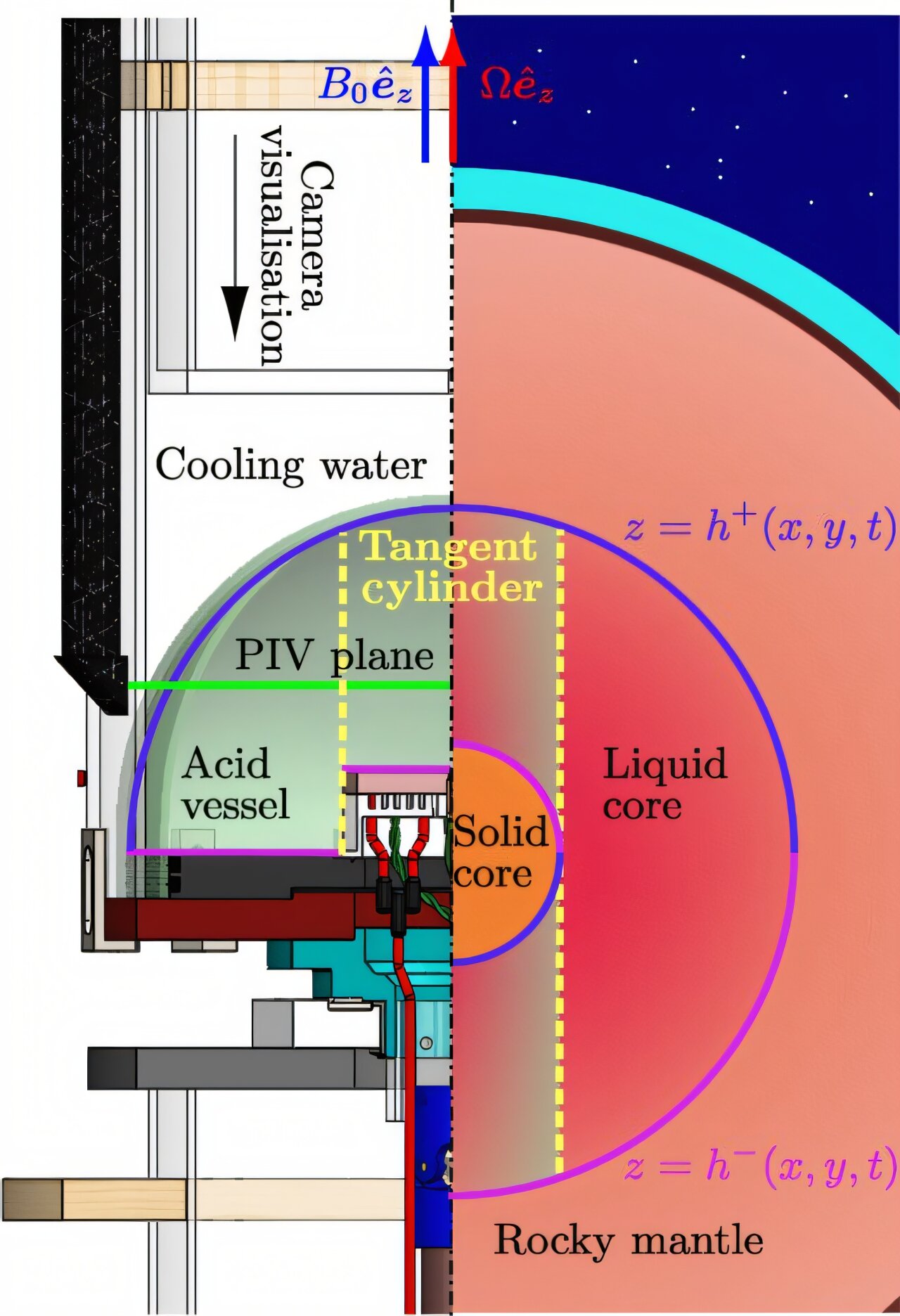

A trio of physicists, two with Coventry University, in the U.K., and the third with Laboratoire National des Champs Magnétiques Intenses, in France, has demonstrated how Earth’s magnetic field may be influencing internal flow, using what they describe as a Little Earth Experiment.
In their study published in the journal Physical Review Letters, Alban Pothérat, Kélig Aujogue, and François Debray built and set up an experimental apparatus that mimicked the ways the Earth’s magnetic field may be influencing internal planetary flow patterns and why they believe it could explain discrepancies between theoretical predictions and satellite observations of the Earth.
Prior research has shown that Earth’s inner core is essentially a hot, metal ball. The outer core, beneath the mantle, is believed to be made of a colder liquid metal. Since both spin, the result is the generation of an electric current, which in turn results in the generation of a magnetic field.
The researchers noted that models describing flows within the Earth typically do not include how the magnetic field impacts the flows that generated it. Because of that, they built an apparatus that could accurately mimic the Earth’s interior mechanism.
The team described the apparatus in its most basic form as a model of the Earth using a tank that was partially filled with a 30% sulfuric acid concentration set inside of a strong magnetic field. They used a laser to take measurements of the flows that resulted. To generate the strong magnetic field, they set their apparatus in the magnetic field generated by the massive magnet inside of the Grenoble High Magnetic Field Laboratory in France. The apparatus allowed for fitting a large, rotating tank inside an even larger magnetic field.
To better mimic real-world conditions, the researchers heated the tank from its center—they also gave the upper hemisphere a flat bottom and set a tank filled with water on its top to provide a cooling effect. The final step was adding tiny glass particles to the liquids to give the laser a way to see and measure the dynamics.
The team used the apparatus to map the direction of the flowing fluids and their velocity at two main sites inside the tank. They found that their setup could be used to develop new theories to describe flow motion inside the Earth more accurately than has been done in the past.
More information:
Alban Pothérat et al, Magnetic Taylor-Proudman Constraint Explains Flows into the Tangent Cylinder, Physical Review Letters (2024). DOI: 10.1103/PhysRevLett.133.184101
© 2024 Science X Network
Citation:
Experiment reveals how Earth’s magnetic field influences flow in planet’s core (2024, November 6)
retrieved 6 November 2024
from https://phys.org/news/2024-11-reveals-earth-magnetic-field-planet.html
This document is subject to copyright. Apart from any fair dealing for the purpose of private study or research, no
part may be reproduced without the written permission. The content is provided for information purposes only.